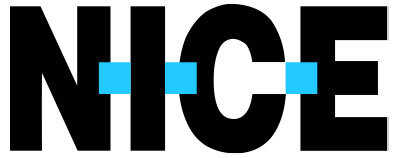Laura Bassett, Vice President, Product Marketing at NICE CXone shares some views on the evolving need to drive enhanced end-to-end customer experiences:
_________
Welcome to this MarTech Series chat, Laura, tell us about your marketing journey and what inspires you most about being in marketing today? We’d love to hear more about your time at NICE CXOne and your role?
Well, that’s a tough one… my journey that landed me in marketing started with working in different industries, in different roles, which then intrigued me to branch into the vendor world. Having the actual business perspective has helped me over the years to understand the issues faced and be able to identify with them personally. I was a bit of a techie at the start of my career and that mixed with my business experience served me well when I started in marketing years ago to communicate the capabilities of the technology in words that matter to the end user.
What inspires me most about marketing today – specifically in the contact center industry with NICE CXone – is that we deliver a product that matters. We can have a positive impact on both the business employee and the end customer. We connect people. We allow people to work from home. We allow people to solve problems quickly without frustration. This industry is a way to mix technical business solutions with the human aspects of real life.
Working with NICE CXone has been an incredible experience – I embarked on my journey 4 years ago with a mission to help us grow internationally and across segments and have had an opportunity to work with people across the globe in our mission to make experiences better for everyone, everywhere. It’s been very exciting to watch the product evolve, and to be part of a company that is focused on innovation and leading the market – with happy customers to boot! As VP of Product and Segment marketing I am in a unique position to see what the market is doing, and hear firsthand from customers on their specific challenges, strategic objects and the issues they’re trying to address. I use the collective insights (market and customers) to inform our strategy and product roadmap – a recipe that has allowed us to be incredibly successful at delivering a responsive product roadmap that meets and exceeds our customer demands.
NICE recently released a report uncovering key digital CX trends / habits: we’d love to hear a few top highlights from this report…
The main takeaways show the great divide between how businesses view their CX and what customers are actually saying. Most businesses assume their customers are very satisfied with the self-service options available, while in actuality, only 15% of consumers feel that way. Brands continue to struggle in keeping up with consumer demands for instant gratification and more self-service tools, which have been expedited by the shift to online everything over the last several years.
Another key finding from the report is that 81% of consumers crave more self-service options, and many see having to call a company as a last resort. Additionally, 52% of customers prefer chat over other channels like phone, email and social media. The key point is that customers don’t want to have to pause their day to interact with customer service, they want the experience to be as hassle-free and frictionless as possible.
Marketing Technology News: MarTech Interview With Erez Nahom, CEO and Co-founder, Konnecto
What do you feel B2B marketers need to do today to drive better end to end journeys and customer experiences? Can you talk about a couple of digital experience tools / other tools that can help?
B2B marketers must prioritize customer experience management (CEM) and developing a CEM program that gives marketers an in-depth look at customer satisfaction and customer challenges – at every point a customer may engage.
Amid rapid digitization, consumers have many various touchpoints where they can begin their relationships with a brand. Investing in and leveraging analytics and data across these digital entry points can provide greater insight into customer thoughts and behavior as they not only consider feedback surveys, but also analyze unprompted input through text and speech analytics, customer complaint volume, Google analytics to dissect search behaviors, and more.
Marketers can better evolve and improve SEO, website content and website UI to overall improve the greater customer experience. Many customers are seeking help on their own, hoping to use self-service to find the solutions before contacting a brand. Making that experience easy to find and as frictionless as possible with helpful information that’s readily available is key.
Can you throw light on a few leading brands around the world that sport of great end to end CX and why you feel they are built out well enough to meet actual present day customer expectations and needs?
Many brands have done a great job rising to the occasion with the challenges faced throughout the tumultuous last several years. With its foray into the streaming world, Disney in particular has been immensely successful at bringing the magic their known for to their roll out of Disney+. Since the launch of the service in late 2019, Disney has been extremely successful in scaling and training their CX to meet customer demand.
For instance, Disney uses Interactive Voice Response (IVR) to assist their customers in a streamlined manner and uses status updates to inform customers if their issue has been resolved before they reach an agent, which is specifically useful in cases such as service outages. By planning customer support around a rapid launch of a new service as a subset of a popular, established brand in conjunction with the product planning, this helped Disney achieve success from the start. Utilizing cloud-based contact center operations allows Disney to centralize control of their operations while allowing for remote deployment to keep up with the evolving workforce.
Another business that has an extremely successful end-to-end CX is Fifth Third Bank. The financial services company has recently overhauled its CX to better understand the Voice of the Customer (VOC). By analyzing customer sentiment through direct and indirect channels, Fifth Third Bank better understands their customers than if they were using customer satisfaction surveys alone. Additionally, the bank has implemented accessible self-service options, giving their consumers easier assistance in completing simple tasks, such as resetting a password.
Marketing Technology News: The Future of Digital Marketing Rests With Consumers
Five thoughts on the future of CX and its impact on B2B marketing?
- Self-service is key: Customers want to be able to handle matters themselves, on their own time, and prioritize flexible solutions like being able to reset a password or change a reservation themselves.
- Rapid increase in digital channels: Customers are prioritizing digital channels like chat over more traditional phone solutions. We expect to see continued movement towards digital, asynchronous channels that allow customers to reach out on their own time and not stay glued to the interaction.
- The rise of chatbots: As chatbots continue to become more intelligent, brands will rely on them more to complete simpler, closed-ended tasks, freeing up agents to handle more complex scenarios – and giving customers the methods they prefer to engage. And, with the strength of AI, they will become easier to design and deploy
- AI is the perfect assistant: AI will be increasingly used by agents on the back end to complete and automate monotonous tasks. AI can also help agents best search internal help centers and find solutions for customers more quickly as it analyzes interactions in real time.
- Increased personalization: Technology will better help us personalize customer interactions and provide customizable experiences. AI and machine learning can help pair customers to agents that best match their personality and debrief agents on the customer’s history with the brand ahead of the interaction, improving the relationship and eliminating friction.
Moving forward, it’s imperative that B2B marketers prioritize personalized, automated CX by building teams of humans and bots that work alongside each other to deliver a seamless experience.
Some last thoughts, takeaways, before we wrap up!
Thank you so much for having me! The last thing I’ll say is that many businesses underestimate the power of search in improving the customer experience. Data suggests that 85% of consumers go to Google as their first stop more than half of the time when plagued with an issue. Brands must be able to accommodate consumer desire for solutions at their fingertips by leveraging SEO to make help center solutions, basic troubleshooting steps and even general company information easily searchable and digestible.
NICE CXone provides AI-powered contact center software, over 25,000 organizations in more than 150 countries, including over 85 of the Fortune 100 companies, partner with NICE to transform—and elevate—every customer interaction.
Laura Bassett is Vice President, Product Marketing at NICE CXone.
Missed The Latest Episode of The SalesStar Podcast? Have a quick listen here!
Episode 129: Regional Sales Development Best Practices with Abdul Javed, VP of Sales for APAC at Clari
Episode 128: Marketing Tips and Best Practices for the Rest of 2022 with Daniel Rodriguez, CMO at Simplr
Episode 127: B2B Sales and SalesTech Best Practices with Craig Moore, Head of Sales at Vyond












